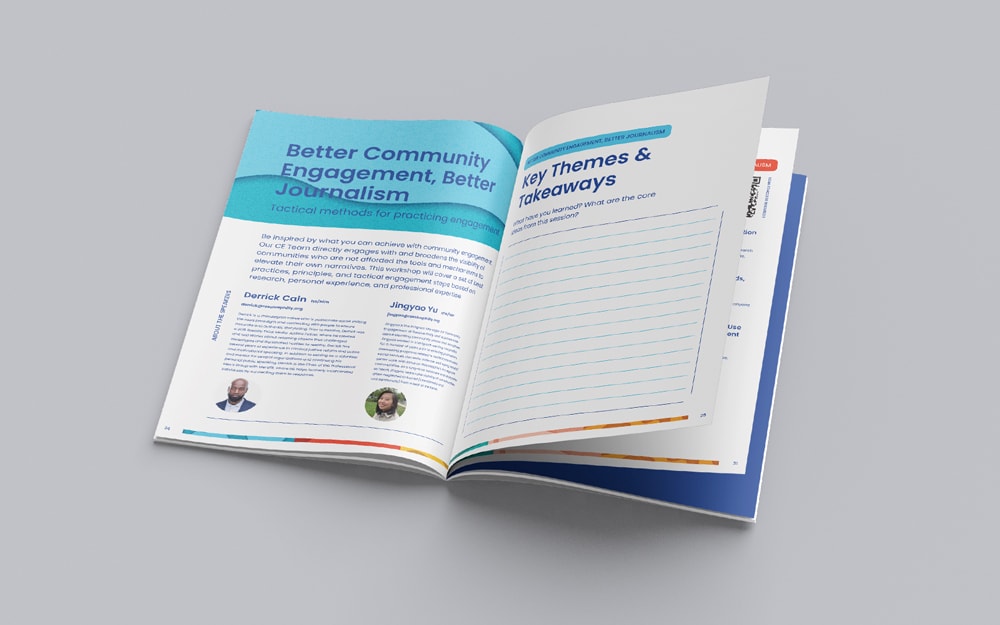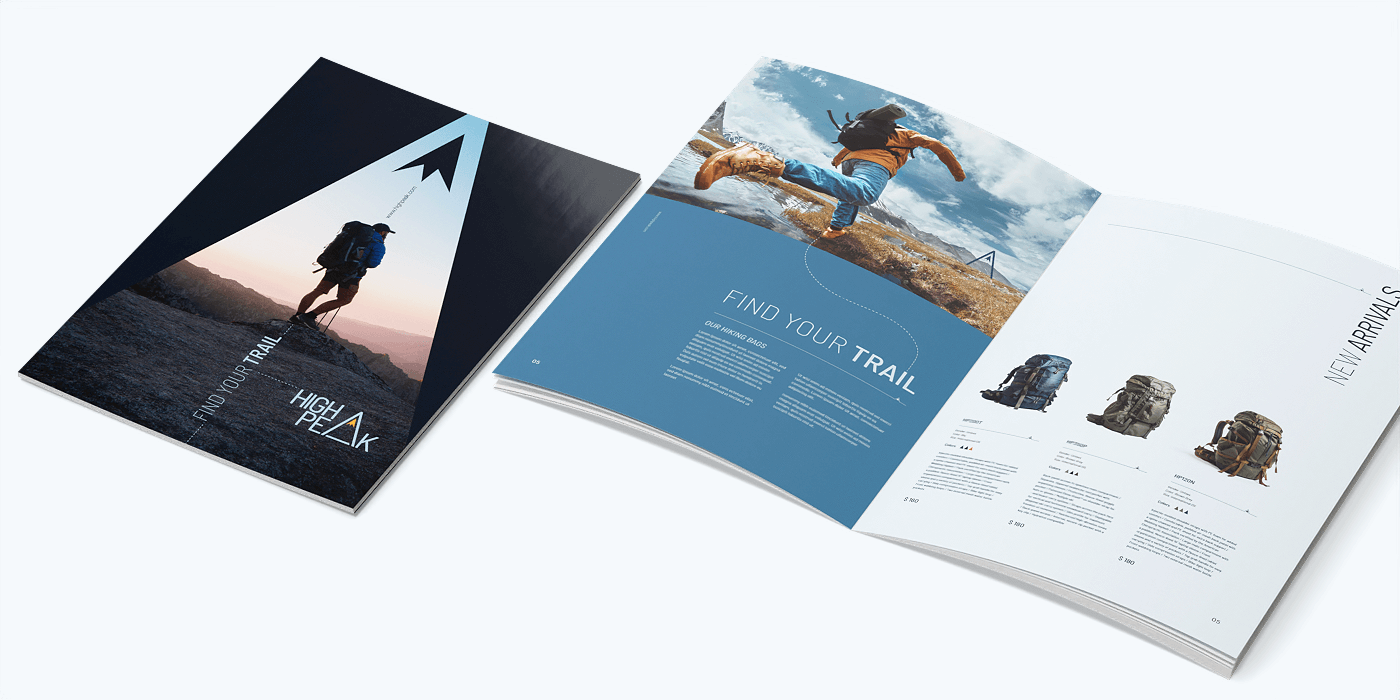The Essential Guide to Recognizing Pamphlet Printing Options and Techniques
The procedure of booklet printing entails multiple factors to consider that can significantly affect the final product. From picking the ideal style and size to understanding the nuances of binding methods, each selection plays a necessary duty. Furthermore, elements such as paper supply and printing methods further affect the performance of the brochure. As one browses these choices, it becomes crucial to grasp exactly how they adjoin and what that implies for the overall end result.
Comprehending Pamphlet Styles and Dimensions
When thinking about booklet printing, comprehending the various formats and dimensions available is crucial for accomplishing the wanted discussion. Brochures can be generated in various layouts, including saddle-stitched, spiral-bound, and perfect-bound, each offering distinct benefits. Common dimensions vary from basic letter (8.5 x 11 inches) to smaller choices like A5 (5.8 x 8.3 inches), enabling versatility based upon content and target audience.Selecting the proper size can affect both the format and reader interaction. Bigger dimensions might suit aesthetically driven web content, while smaller styles might be much more mobile and straightforward. Furthermore, the variety of web pages influences the choice of binding technique, as thicker booklets might call for tougher bindings. Ultimately, understanding these aspects enables an extra customized approach, guaranteeing that the last product straightens with the intended message and visual, boosting the general performance of the interaction.
Choosing the Right Paper Stock

Binding Techniques: Considerations and choices
When it involves binding methods for brochures, a number of alternatives are readily available, each with distinct advantages. Saddle stitch binding supplies a cost-effective service for thinner brochures, while best binding strategies provide a more refined seek thicker publications. Wire-O binding sticks out for its durability and ease of usage, making it excellent for records that call for adaptability.
Saddle Stitch Binding
Saddle stitch binding provides a economical and practical solution for constructing brochures, making it a prominent option among services and authors. This binding technique includes folding sheets of paper in half and stapling them along the fold line, developing a cool and orderly appearance. Generally ideal for pamphlets with a reduced page count, saddle sewing is optimal for magazines, brochures, and instructional products. The simplicity of this technique enables for quick production and is often preferred for advertising products or short runs. However, it is vital to keep in mind that saddle stitch binding might not appropriate for thicker booklets, as the back might not hold up under increased weight. On the whole, it remains a dependable option for several printing jobs.
Perfect Binding Techniques
Perfect binding is a commonly made use of strategy that offers a polished and expert surface to booklets and magazines. This approach includes gluing the web pages together at the spinal column making use of a strong adhesive, permitting for a clean edge and the capability to hold a larger number of pages compared to saddle stitching. Perfect binding is specifically suitable for thicker pamphlets, such as magazines and yearly records, where a sturdy, level spine is preferred. Furthermore, it provides the option for a printed cover that can be developed to improve aesthetic appeal. Nonetheless, factors to consider such as web page count, paper weight, and the intended use the brochure need to be taken into consideration, as they can impact longevity and overall high quality.
Wire-O Binding Alternatives
Wire-O binding, recognized for its resilience and versatility, uses an outstanding option for booklets that require easy page turning and a professional look. This binding technique utilizes a series of metal loops that hold web pages firmly, permitting them to exist level when open. It is specifically ideal for handbooks, directories, and presentations as a result of its durable nature. Wire-O binding is readily available in different colors and diameters, accommodating different page matters and thicknesses. Furthermore, it allows the addition of covers and tabs, improving the pamphlet's overall aesthetic. Factors to consider for Wire-O binding include the selection of cord color, the dimension of the loopholes, and the extent of customization desired, every one of which can exceptionally influence the last product's appearance and capability.
Digital vs. Offset Printing: Which Is Best for You?
When picking a printing approach for brochures, understanding the distinctions between digital and counter printing is necessary. Digital printing utilizes modern-day technology to create high-grade prints rapidly and cost effectively, making it suitable for short runs or tasks requiring quick turn-around times. It enables modification, offering the capacity to publish on-demand with very little waste.In contrast, counter printing is a conventional approach that masters creating large quantities with regular high quality. It entails transferring ink from a plate to a rubber covering, then to the paper, which causes vibrant shades and specific details. However, balance out printing generally calls for longer setup times and is a lot more cost-effective for larger volumes.Ultimately, the option in between electronic and counter printing depends on job demands, spending plan, and desired quantity. For tiny, time-sensitive jobs, electronic could be the most effective choice, while balanced out may be better for larger, top quality manufacturings.

Designing Your Brochure: Tips and Finest Practices
When developing a booklet, careful attention to layout, font style selection, and shade usage can considerably improve its effectiveness. A well-structured design overviews the viewers's eye, while proper font styles guarantee readability and convey the desired tone. Additionally, reliable usage of color can stimulate feelings and highlight key details, making the general design extra impactful.
Selecting the Right Layout
How can one effectively select the best format for a brochure? It is crucial to assess the booklet's objective and target audience. A clean, arranged layout boosts readability and engagement. Making use of a grid system can help in aligning aspects consistently, producing a professional appearance. Additionally, integrating visual pecking order via varying dimensions and placements of images and message can direct the reader's eye and emphasize vital information. It is likewise important to leave adequate white room, which protects against overcrowding and permits better focus. Testing various formats with mock-ups can offer insight into just how the style carries out in real-world situations, ensuring that the final product satisfies both useful and aesthetic demands. Useful Selecting Ideal Typefaces
A well-chosen font style can greatly boost the total style of a brochure, matching the design and enhancing the web content's message. The option of typefaces should consider readability, specifically for body text, as it ensures the details comes to all readers. Sans-serif fonts are often chosen for electronic formats, while serif font styles can offer a typical feeling in printed materials. It's advisable to limit font options to two or three to keep aesthetic comprehensibility. In addition, font size plays an important function; headings ought to be distinctive however not overwhelming, while body message should be comfortable for analysis. When choosing fonts, alignment with the pamphlet's style and target market is necessary for efficient communication and visual charm.
Effective Usage of Shade
Color works as an effective device in pamphlet layout, guiding and shaping assumptions visitor feelings. It can stimulate sensations of excitement, calmness, or depend on, depending upon the hues chosen. Developers should think about shade concept principles, making certain that the chosen combination straightens with the booklet's message and target audience. As an example, utilizing warm colors like red and orange can produce necessity, while cooler tones like blue and green foster tranquility.Additionally, contrast plays a vital function; corresponding shades can boost readability and aesthetic appeal. Consistency in shade usage across pages further strengthens brand identity and cohesion. Eventually, reliable shade application not just catches interest yet additionally reinforces the pamphlet's objective, making it an important element you could try these out of successful style.
Completing Touches: Coatings and Unique Effects
While numerous take into consideration the web content and design of a brochure one of the most vital aspects, the finishing touches, such as coatings and special impacts, play an important duty in enhancing its total appeal. Coatings can supply security and longevity, ensuring that the booklet endures damage. Matte finishes supply an innovative, non-reflective surface, while shiny finishings can make shades show up more lively and distinctive. Unique effects, like embossing or foil stamping, include a responsive dimension that can create an unforgettable impression. These techniques can highlight specific locations, accentuating crucial information or developing visual passion. Additionally, UV finishing can provide a high-shine coating that elevates the general look.Together, these finishing touches not only boost the brochure's visual but also connect professionalism and reliability and focus to detail, eventually leaving a lasting influence on the reader.
Expense Considerations for Brochure Printing
Recognizing the various expense factors to consider for booklet printing is necessary for companies and companies intending to enhance their budgets. Trick factors influencing prices consist of the selection of binding, paper, and ink methods. Better materials, such as exceptional paper or specialized inks, normally raise the overall expense. Furthermore, the size and web page matter of the booklet play a substantial duty; bigger booklets require more resources and time to produce.Another crucial factor to consider is the printing method, whether digital or offset, as each has its own pricing structure and suitability for different amounts. Organizations need to additionally consider design prices, which can differ based upon intricacy and making use of specialist services. Inevitably, delivery and handling charges can contribute to the overall, particularly for large orders. By reviewing these components, companies can make educated decisions that line up with their financial capabilities while achieving the wanted top quality in their published products.
Often Asked Questions
What Are the Ecological Influences of Booklet Printing?
The ecological effects of brochure printing consist of logging from paper production, carbon emissions from transportation, and waste generation from thrown out products - Booklet Printing. Sustainable practices, such as using recycled paper and eco-friendly inks, can mitigate these results
Exactly How Can I Guarantee Shade Precision in My Booklet?
To assure color accuracy in a pamphlet, one must utilize adjusted screens, employ specialist color accounts, carry out test prints, and pick top notch printing services that offer shade matching and proofing alternatives for ideal outcomes.
What Is the Normal Turnaround Time for Brochure Printing?
The common turn-around time for brochure printing go varies depending on the complexity her comment is here and amount - Booklet Printing. Typically, it varies from a few days to 2 weeks, influenced by aspects such as printing approaches and completing needs
Are There Minimum Order Quantities for Pamphlet Printing?

Can I Print Booklets in Several Languages?
Publishing booklets in multiple languages is possible. Numerous printing solutions use alternatives for multilingual or bilingual designs, enabling effective interaction. Cautious preparation warranties that create elements accommodate various languages without compromising readability or appearances. In addition, variables such as paper supply and printing methods more affect the efficiency of the brochure. When thinking about brochure printing, comprehending the numerous layouts and sizes available is essential for attaining the wanted discussion. When choosing a printing technique for booklets, understanding the distinctions in between electronic and balance out printing is vital. Furthermore, the size and web page matter of the brochure play a significant role; bigger brochures need more sources and time to produce.Another crucial consideration is the printing technique, whether electronic or balanced out, as each has its own rates framework and viability for various quantities. The ecological effects of brochure printing include deforestation from paper production, carbon exhausts from transport, and waste generation from discarded products.